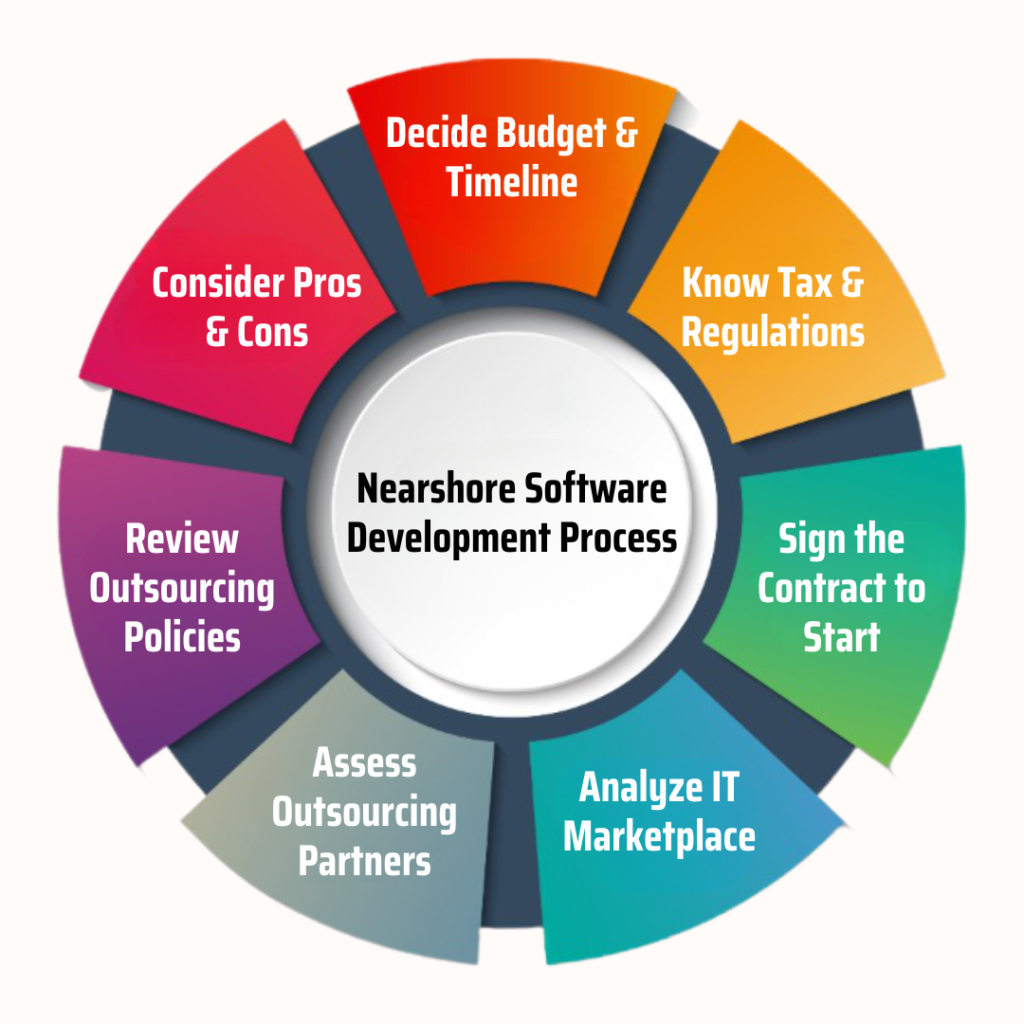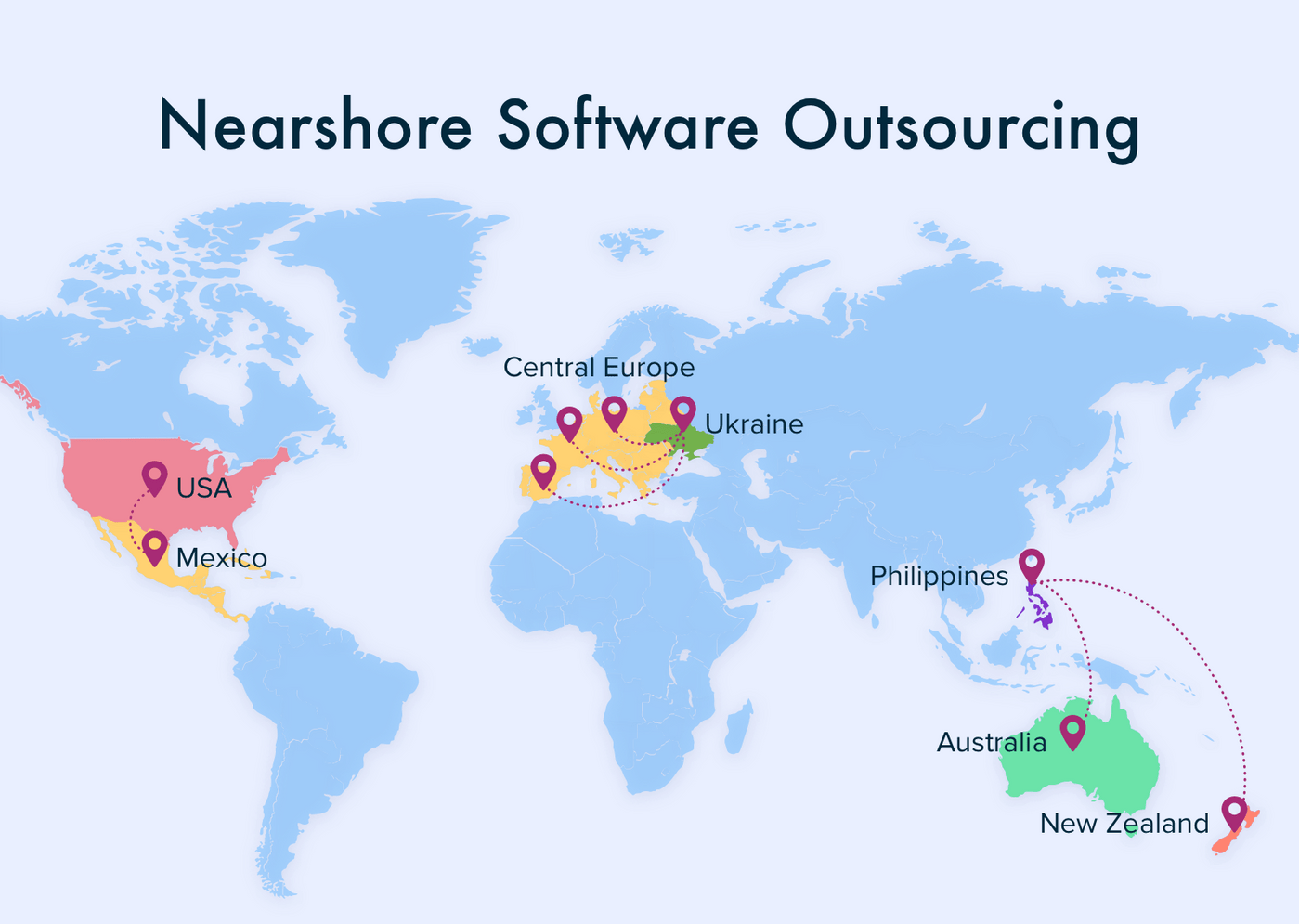Nearshore software developers play a crucial role in today’s global market, offering businesses the opportunity to tap into diverse talent pools and cost-effective solutions. This article delves into the key aspects of nearshore software development, from its advantages to best practices in managing remote teams.
Introduction to Nearshore Software Developers
Nearshore software development refers to the practice of outsourcing software development projects to a neighboring or nearby country. This model offers various benefits compared to traditional offshore outsourcing, including geographical proximity, cultural alignment, and similar time zones.
One of the key advantages of hiring nearshore software developers is the ease of communication due to overlapping working hours and cultural similarities. This leads to better collaboration, faster feedback cycles, and ultimately, higher project success rates. Additionally, nearshore teams often have a better understanding of Western business practices and can provide more personalized support.
When comparing nearshore to offshore software development, nearshore teams are typically located in countries that are closer to the client’s home country, resulting in reduced travel time and costs. This proximity also allows for more frequent face-to-face meetings, which can be crucial for building strong relationships and ensuring project alignment.
Benefits of Nearshore Software Development
- Improved communication and collaboration due to similar time zones and cultural alignment
- Reduced travel time and costs compared to offshore outsourcing
- Higher project success rates and faster feedback cycles
- Better understanding of Western business practices and personalized support
Factors to Consider When Choosing Nearshore Software Developers

When choosing nearshore software developers, there are several key factors to consider to ensure a successful partnership. Factors such as language proficiency, time zone compatibility, and cultural fit can greatly impact the effectiveness of collaboration and project outcomes.
Language Proficiency
Language proficiency is crucial when working with nearshore software developers. Ensure that the developers have a strong command of the language you communicate in to avoid misunderstandings or misinterpretations. Effective communication is essential for project success, so choosing developers who are fluent in the language you use is vital.
Time Zone Compatibility
Consider the time zone difference between your location and the nearshore software developers’. Opt for a nearshore team whose working hours overlap with yours to facilitate real-time communication and collaboration. This alignment can help streamline project progress and decision-making processes, leading to more efficient outcomes.
Cultural Fit Considerations
Cultural fit is another important factor to consider when choosing nearshore software developers. Ensure that the developers’ work culture aligns with yours to foster a harmonious working relationship. Understanding and respecting each other’s cultural norms and practices can lead to better teamwork, communication, and overall project success.
Cost Comparison of Nearshore Software Development
When it comes to choosing between nearshore and onshore software development, cost is a significant factor that businesses consider. Let’s delve into the cost comparison of nearshore software development to understand the potential savings and factors that come into play.
Analyze Cost Savings Compared to Onshore Development
One of the primary reasons companies opt for nearshore software development is the cost savings it offers compared to onshore development. By outsourcing to a nearshore team, businesses can benefit from lower labor costs without compromising on quality.
Examples of Cost Structures for Nearshore Teams
Here are some examples of cost structures for nearshore teams:
- Hourly Rates: Nearshore developers typically charge lower hourly rates compared to onshore developers due to differences in labor costs.
- Project-based Pricing: Nearshore software development companies often offer competitive project-based pricing, providing cost predictability for businesses.
- Staff Augmentation: Businesses can augment their existing teams with nearshore developers, reducing the overall cost of hiring full-time employees.
Impact of Currency Exchange Rates on Costs
The impact of currency exchange rates on costs is a crucial consideration when engaging in nearshore software development. Fluctuations in currency exchange rates can affect the overall cost of the project, impacting budgeting and financial planning. It’s essential for businesses to monitor and manage currency risks effectively to mitigate any adverse effects on costs.
Best Practices for Managing Nearshore Software Development Teams

Effective communication is key when managing nearshore software development teams. Clear and consistent communication helps foster collaboration and ensures that everyone is on the same page. Overcoming distance barriers is essential to maintain productivity and efficiency in a remote work environment. Utilizing the right tools and technologies for remote collaboration can greatly enhance team communication and project management.
Effective Communication Strategies
- Establish regular communication channels such as daily stand-up meetings, weekly progress updates, and instant messaging platforms to keep everyone in the loop.
- Encourage open and transparent communication among team members to address any issues or concerns promptly.
- Use video conferencing for important meetings to facilitate face-to-face interactions and build rapport among team members.
- Provide detailed project documentation and guidelines to ensure that everyone understands their roles and responsibilities.
Overcoming Distance Barriers
- Organize team-building activities and virtual social events to promote team bonding and camaraderie despite the physical distance.
- Establish clear working hours overlap to accommodate different time zones and facilitate real-time collaboration.
- Encourage cultural awareness and sensitivity to bridge the gap between team members from diverse backgrounds.
- Utilize project management tools with features like task assignment, progress tracking, and timeline management to keep everyone aligned and accountable.
Tools and Technologies for Remote Collaboration, Nearshore software developers
- Implement collaboration platforms like Slack, Microsoft Teams, or Zoom for seamless communication and file sharing.
- Utilize project management tools such as Jira, Trello, or Asana to track progress, assign tasks, and manage deadlines effectively.
- Integrate version control systems like Git to ensure code consistency and enable collaborative coding among team members.
- Explore virtual whiteboarding tools for brainstorming sessions and visual collaboration on project ideas and concepts.
Case Studies of Successful Nearshore Software Development Projects
In this section, we will delve into real-world examples of companies that have successfully leveraged nearshore software development teams. We will highlight the challenges they faced, how they overcame them, and analyze the outcomes and benefits of these projects.
Case Study 1: Company X
Company X, a leading tech firm, decided to partner with a nearshore software development team to build a new mobile application. One of the main challenges they faced was communication barriers due to different time zones. To overcome this, they established regular video conferences and utilized collaboration tools for real-time communication.
- Outcome: The mobile application was successfully launched within the specified timeline and budget.
- Benefits: Company X was able to access a pool of talented developers at a lower cost compared to hiring locally. The project’s success led to increased customer satisfaction and boosted Company X’s reputation in the market.
Case Study 2: Company Y
Company Y, a startup in the e-commerce sector, partnered with a nearshore software development team to revamp their website and enhance user experience. One of the challenges they faced was cultural differences impacting team dynamics. To address this, they organized team-building activities and training sessions to foster better collaboration.
- Outcome: The website redesign was well-received by users, leading to increased traffic and sales for Company Y.
- Benefits: Company Y was able to achieve their project goals within the set timeline and budget constraints. The partnership with the nearshore team also allowed them to scale their development resources as needed without incurring high costs.
Ultimate Conclusion

In conclusion, nearshore software development presents a compelling option for companies seeking efficient and skilled resources beyond their borders. By embracing the benefits of nearshore teams and implementing effective management strategies, businesses can achieve successful outcomes and drive innovation in their projects.
General Inquiries: Nearshore Software Developers
What is nearshore software development?
Nearshore software development involves outsourcing software projects to companies in nearby countries with similar time zones and cultural compatibility.
How does nearshore software development differ from offshore?
Nearshore software development involves collaborating with companies in neighboring countries, usually with shared borders, while offshore involves working with companies in distant locations.
What are some key factors to consider when hiring nearshore software developers?
Factors to consider include language proficiency, time zone compatibility, and cultural fit to ensure seamless collaboration.
How can businesses effectively manage nearshore software development teams?
Effective communication strategies, overcoming distance barriers, and utilizing remote collaboration tools are essential for successful management of nearshore teams.
